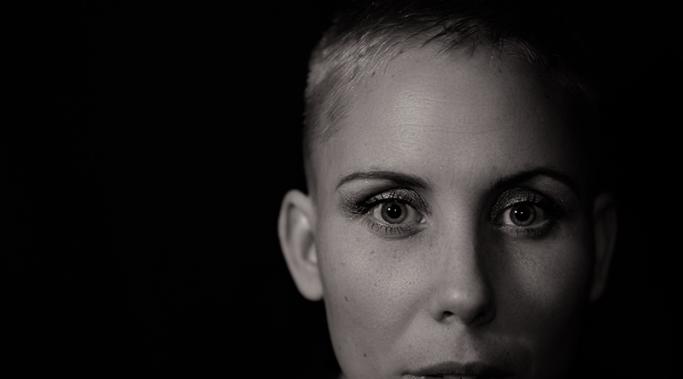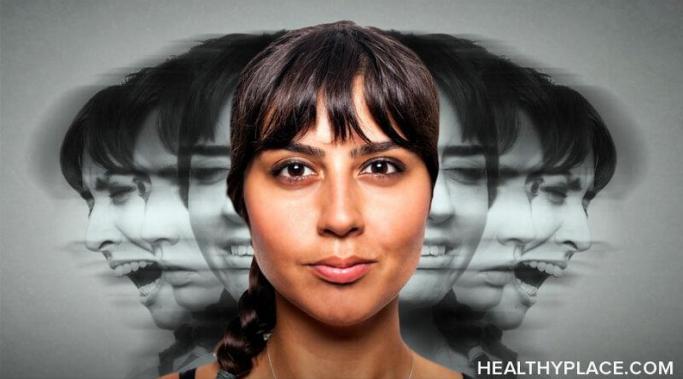Eye Movement Desensitization and Reprocessing (EMDR) therapy is primarily used as a treatment for PTSD. Discovered and developed by Francine Shapiro, Ph.D., EMDR uses eye movements, taps or tones to reprogram trauma victims' thinking. The end result can be relatively fast relief of PTSD symptoms, including the re-experiencing of the trauma and other symptoms resulting from horrific events like rape or combat. EMDR also helps with "little t" traumas having to do with beliefs about ourselves formed during childhood and other mental health disorders.
Dissociative Disorders - TV Show Blog
Amanda_HP
Media images can be very powerful. When we see something, especially when it's "based on a true story," our mind removes the words "based on a" and we are left with "true story;" as if what we are seeing on the screen is the absolute truth. In fact, the "based on" means it's an adaptation of a story with a lot of "Hollywood" thrown in to keep you interested.
Amanda_HP
I'm reading the Bipolar Vida blog, and wondering "how much can one person take?" Cristina, admittedly, had a bad childhood which, she says, probably triggered the bipolar disorder she now lives with.
In the months since she started her bipolar blog here at HealthyPlace.com, Cristina has endured depressive episodes, hypomania, and everything else bipolar disorder can bring your way. Yet, in almost every blog post, she mentions that she's doing everything she can to keep her bipolar recovery on track.
Amanda_HP
Whether it's a mental or physical illness, it's natural to concentrate on the person who has the illness. Many forget that family members and loved ones are also suffering. The impact of mental illness on families comes in the forms of grief, denial, frustration, exhaustion, and stigma.
Amanda_HP
Hello. My name is Rebecca. I am writing in response to the article I just saw on the HealthyPlace website about living with DID. I am a 33 year old mother of 3 little girls and have spent the past 2 years watching my oldest daughter completely fall apart. I watched her go from being a normal, albeit extremely emotional, little girl to not even knowing which parts of her life are based in reality and what is happening in a reality that exists only within her own head.
admin
Maria's story of living with dissociative identity disorder (DID) is a riveting one. She chronicles living with DID both undiagnosed and diagnosed, then dealing with the stigma of DID.
Maria, our guest on the Misconceptions About Dissociative Identity Disorder video, wrote the following post for HealthyPlace.
admin
Years ago, I saw the movie Sybil, about a woman with dissociative identity disorder (DID). Sybil caught the world’s attention by shedding light on what it's like living with multiple personalities and coping with dissociative identity disorder. Most recently, screenwriter Diablo Cody entertains TV viewers weekly with the real but exaggerated accounts of a woman struggling with dissociative identity disorder without the assistance of medications.
This Tuesday, we'll be discussing dissociative identity disorder diagnosis and the complications of living with it day-to-day. If you are not familiar with the term dissociative identity disorder, the term multiple personality disorder or “split personality” may be more recognizable.
admin
Mental health certainly carries a lot of stigma, but think about this -- how many adults have you ever heard discuss surviving child sexual abuse? Outside of my job, the answer would be "none." No one talks about it. They mention sexual predators or child molesters, but not what life is like after being sexually abused as a child.
On Tuesday night's HealthyPlace TV Show, the discussion centered around the impact child sexual abuse has later in life. Dr. Harry Croft, Medical Director of HealthyPlace, helped us understand how sexual abuse impacts victims in their adult lives. Many child abuse survivors suffer from posttraumatic stress disorder (PTSD), depression, personality disorders and many self-harm. It's frightening, but some go on to become abusers themselves.







